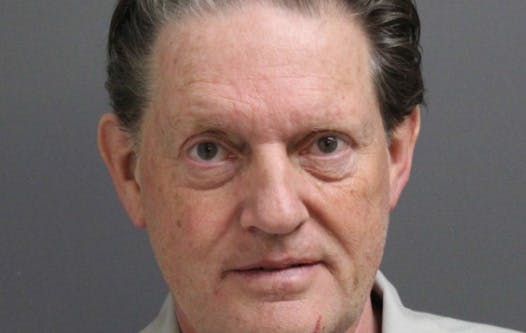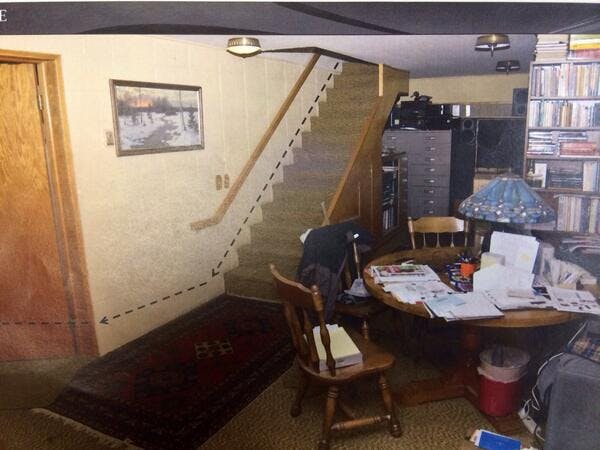Byron Smith's fate was known almost from the beginning of Tuesday's jury deliberations.
"For the most part, we were all pretty much in agreement from the start," juror Thomas Strandberg said. "We just wanted to make sure that we thought about all the evidence that was in front of us, and we wanted to go over everything that we had in front of us. Other than that, there wasn't a whole lot of sticking points, so to speak."
Juror Evelyn Mrosla agreed, saying one juror held out from agreeing to the guilty verdicts for a while, "but it just went fast, though.''
Even the lone holdout wasn't arguing for acquittal, but "just wanted to be sure," said Strandberg, 32, of Swanville, Minn.
The jury deliberated only three hours before convicting Smith of two counts each of first-degree murder and second-degree murder for the shooting deaths of Haile Kifer, 18, and Nick Brady, 17. The teens were shot during a daylight burglary of Smith's Little Falls, Minn., house on Thanksgiving Day 2012.
The two jurors, speaking just hours after their verdicts were delivered, said the picture of Smith that emerged from days of often chilling testimony was of a man who methodically planned for a violent confrontation rather than a homeowner surprised by intruders.
Several other jurors declined to comment in detail, saying only that it was a tough case to hear but not a tough one to decide.
Smith's planning before the shootings — from moving his truck off his property to a neighbor's home, to surveillance devices set up inside and outside of the home, to laying a tarp at the foot of his stairs — pointed toward him preparing for what happened, Strandberg said.
"It seemed like he had done many things to either lure them into the house or into the basement itself," Strandberg said. "Moving the truck was the very first big sign that he had planned something. And then moving the bodies and having the tarp handy had a lot to do with it."
Beyond that, Strandberg said, "it seemed like he sat there and waited for it."
"It appeared to be that it was, for lack of a better term, his kill zone, where he wanted them to come in and enter, so he could have ample opportunity to kill them," Strandberg added.
Some of the jurors believed that Smith waited a full day before reporting the shootings because he wanted to see whether other burglars would show up — even unscrewing bulbs from fixtures as night fell so that any new intruders wouldn't be able to see in his basement.
"That was a major issue for us as well," Strandberg said.
"We agreed that might have been part of a plan to see if there were more people coming, possibly, or to possibly clean something up or get rid of something," Strandberg said.
"I definitely thought that everything he had done was precalculated," Strandberg said.
Smith was a trained security engineer for U.S. embassies until his 2006 retirement. Fed up over a series of burglaries on his property, he had set up a surveillance system that picked up images of Kifer and Brady outside his home. Inside the house, police found hours of audiotapes on a digital recorder, with sounds of shots fired, bodies dragged on tarps and Smith taunting the dying teens.
The teens were shot repeatedly about 10 minutes apart, with Brady killed first.
Prosecutor Pete Orput portrayed a killer who sat in a reading chair with two guns nearby until the break-in, then methodically dispatched Brady and Kifer with final shots at close range.
The audio was particularly difficult for the jurors, Strandberg said.
"The whole audiotape itself was pretty hard to listen to," he said. "It was pretty bone-chilling."
Strandberg said jurors didn't learn a whole lot about Smith's background, except that he served in the military, had worked for the State Department overseas for about 20 years and was trained in surveillance.
Smith's defense might have been more plausible, Strandberg said, if it had appeared that he had "just been doing something around the house" when people broke in and he confronted them.
Jurors also discussed why Smith hadn't called 911 before the burglary, when he heard the sound of breaking glass and saw the shadow of someone peering in the window.
"Obviously, he might have had a little bit of fear, I mean just with the whole situation itself,'' Strandberg said. "But as far as everything else goes, I feel that he had pretty much planned just about everything out and was ready for whatever came his way."
Strandberg said there were a couple of nights where he lost sleep over what he heard and saw in the courtroom.
"It was a tough job, no doubt about it," he said.
For Mrosla, a retired farmer from Bowlus, Minn., the verdict was the right one but also completed the destruction of three lives that began that Thanksgiving Day.
"It's a terrible tragedy, because not only did the children lose their lives, but they destroyed the man, too, by coming into his house," Mrosla said.
"Nobody won. The children lost, and now he has lost, too."
Joy Powell • 612-673-7750
Search resumes in southwestern Minnesota for 15-year-old boy who jumped in lake after losing canoe oar

Hockey coach with roots in Minneapolis Park and Rec dies at 81

Legal Marijuana Now Party fights to keep its major party status before Minnesota Supreme Court
Officials say man shot 2 months ago in vacant downtown Minneapolis triplex was victim of homicide


